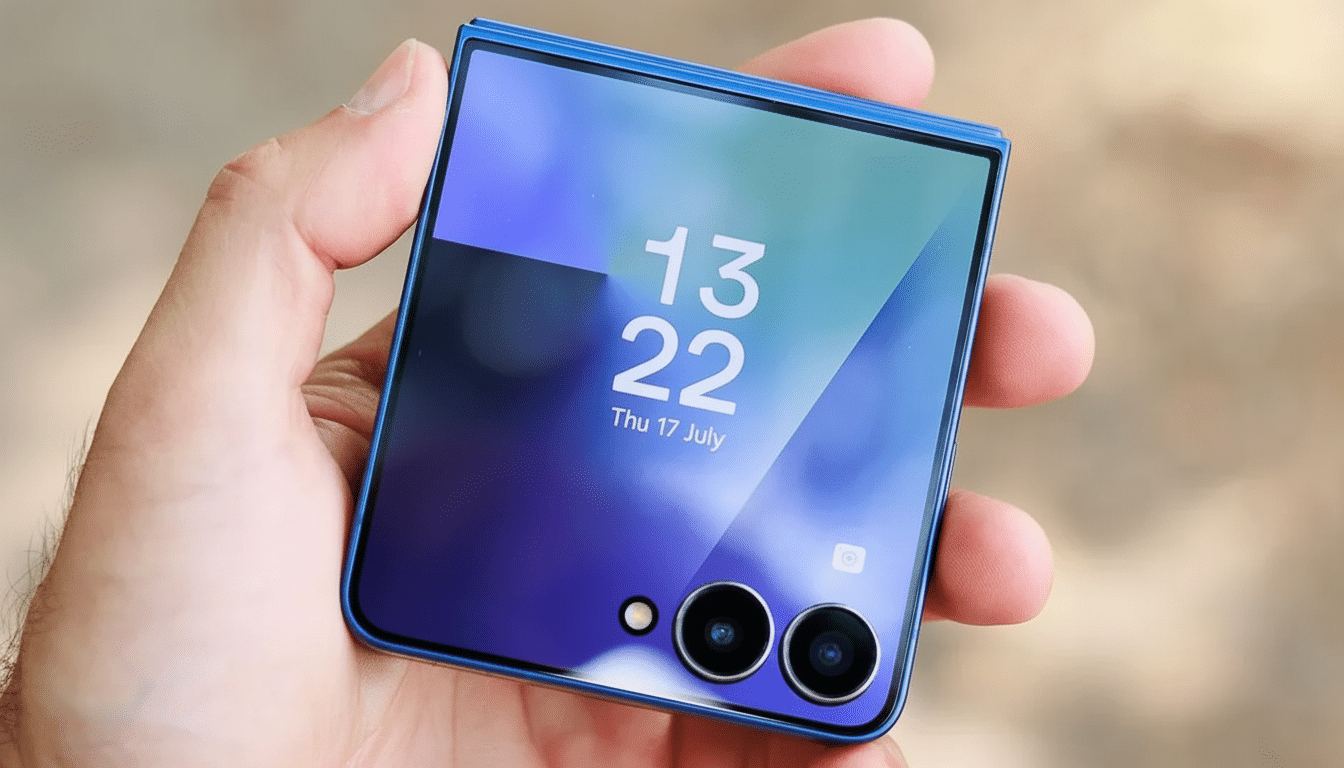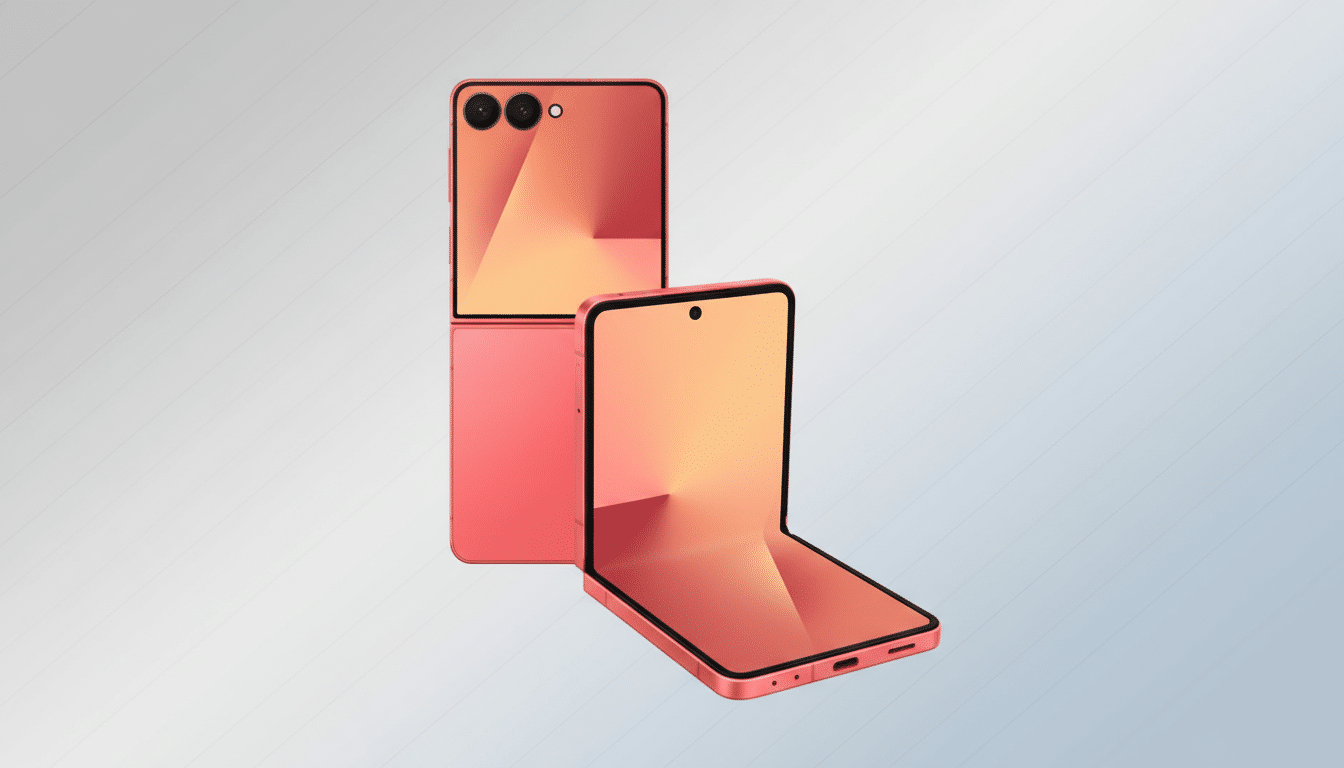Samsung is said to have a major design push in store for the Galaxy Z Flip 8, which would see the clamshell phone becoming significantly thinner and lighter by over 10% compared to its current guise. The maneuver is reminiscent of the successful tactic employed by the Galaxy Z Fold 7, which combined an extreme slimming down with powerful commercial traction in key markets.
Samsung’s goal would put the Z Flip 8 at around 12mm when closed, and closer to 169g, according to Korean outlet The Bell, although insiders say final measurements could come in even lower. That would certainly be a significant change from the Z Flip 7, which trimmed thickness against its forebear but only to about 188g.
- A push for a thinner, lighter Galaxy Z Flip 8
- Following the Galaxy Z Fold 7 playbook for slimming down
- Engineering trade-offs to watch in the push for thinness
- Hardware isn’t the only solution for Flip usability
- How this approach could alter the foldable category
- What to watch next as the Galaxy Z Flip 8 develops

A push for a thinner, lighter Galaxy Z Flip 8
For a clamshell, every gram, every tenth of a millimeter counts. A thinner Z Flip 8 would lie flatter in a pocket, flip open with even less perceived effort, and change the perception of weight balance so the top half doesn’t feel unwieldy during one-handed use. If Samsung meets its in-house goal, the Flip would undercut many competitors’ clamshells that float around 190g or below.
With the Z Flip 7 already demonstrating what incremental engineering can yield in a phone thinner both open and closed, a double-digit decrease this time around would mean deeper structural changes, rather than surface adjustments, are in the offing.
Following the Galaxy Z Fold 7 playbook for slimming down
There’s precedent. The Galaxy Fold’s successor includes a sublimely thin frame and all-new hinge geometry with narrower bezels to make it even leaner without losing robustness. The company has stated this redesign helped boost meaningful demand, with the Fold 7 seeing sales about 50% higher in the US compared to its predecessor.
Adapting that playbook for a clamshell presumably entails a lighter frame alloy, more hinge miniaturization, a thinner display stack with better ultra-thin glass, and space-efficient antenna routing. The aim is to reduce mass in places that don’t affect rigidity while maintaining the torsional strength that keeps the crease solid over hundreds of thousands of folds.
Engineering trade-offs to watch in the push for thinness
Ultra-slim devices force tough choices. The large battery and thermals are the initial pressure points; fitting a 4,000mAh-class unit into a lighter frame demands higher-density cells and narrower internal clearances. Dissipating heat is trickier with less copper and graphite to work with, so any next-gen chipset will require efficient power management and improved vapor-chamber design if it wants to avoid throttling under sustained loads.
Durability is the other axis. There are dust and water resistance ratings to maintain, hinge tolerances that need to stay free of wear, and protective layers above the foldable OLED that need to balance flexibility and scratch resistance. Samsung has been making each of these generally better with each generation, and the question is how it can continue that trajectory while cutting away material from the structure.
Hardware isn’t the only solution for Flip usability
And design wins will only get you so far if usability pain points abound. The cover screen software on the Z Flip 7 felt like it was held back, with unevenness in support for full apps and limited customization that forced many users to default back to the main display for the simplest tasks. A more open, intuitive cover experience — better keyboard support, richer widgets, and smarter app continuity — would make the smaller screen a proper daily driver.

Charging and imaging also require consideration. Other Flip models have been kind of stubborn on the charging front, opting for modest speeds with wires and running warm in the process. Some of this could be alleviated by improving thermal profiles and better charging algorithms. And on cameras, larger sensors and more powerful computational photography might lift low-light performance and zoom so that the gap with slab flagships isn’t as large.
How this approach could alter the foldable category
Clamshells are the workhorse engine of the foldable market, making up around 60 percent of shipments by form factor in recent years, Counterpoint Research said. If Samsung can bring us a Flip that is actually and noticeably thinner and lighter, and not just something with better battery life or greater toughness, then it would sharpen its edge with fast-improving competition from the likes of Motorola, Honor, Oppo, and Huawei.
That would open up to a wider market (beyond early adopters), considering that in some areas pocketable size and weight are major purchase factors.
It’s the same calculus that helped make the Fold 7, and it’s a move Samsung looks steadfast to pull again.
What to watch next as the Galaxy Z Flip 8 develops
Watch out for three tells:
- Hinge branding that suggests a new mechanism
- An official weight under 170g
- Battery specs that stay constant despite a slimmer build
If those sync up — coupled with more accomplished cover screen software — the Galaxy Z Flip 8 won’t just read slimmer on paper; it could feel like the most mainstream-ready Flip yet.
Simply put, applying the Fold 7 formula to the Flip 8 is what Samsung’s challenge would demand. The market rewards clickbaiting levels of weight and thickness cuts, and the company has the supply chain and design maturity to actually get there — if that everyday experience matches up with its hardware.

